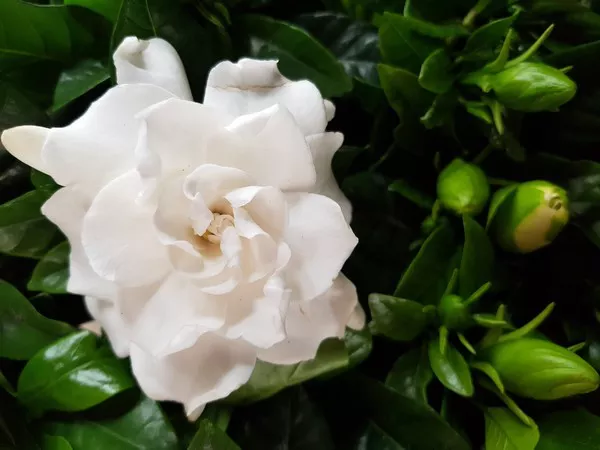Orchids, with their exotic and captivating beauty, have enthralled gardening enthusiasts for centuries. Known for their diverse range of colors, shapes, and sizes, these delicate blooms can be a rewarding addition to any garden or indoor space. However, cultivating orchids requires specialized knowledge and care due to their unique requirements. This comprehensive guide will walk you through the essential steps to successfully plant and nurture these stunning flowers, covering key topics from selecting the right orchid to maintaining its health over time.
1. Choosing the Right Orchid Species
Before you begin, it’s crucial to understand that there are numerous orchid species, each with distinct growing conditions. Some popular options include Phalaenopsis, Cattleya, Dendrobium, and Oncidium. Research the specific requirements of the orchid species you’re interested in to ensure a suitable match with your local climate and available growing space.
2. Optimal Growing Environment
Orchids thrive in environments that mimic their natural habitats. Providing the right conditions is essential for their successful growth:
Light: Most orchids prefer filtered, indirect sunlight. Place them near a window with sheer curtains to prevent harsh sunlight from scorching their delicate leaves. The ideal light intensity can vary based on the species, so research your orchid’s needs.
Temperature and Humidity: Orchids typically prefer temperatures ranging from 60°F to 80°F (15°C to 27°C) during the day and slightly cooler temperatures at night. Additionally, many orchids appreciate higher humidity levels. You can achieve this by using a humidity tray, a room humidifier, or misting the plants regularly.
Air Circulation: Good air circulation prevents the growth of mold and bacteria on orchid leaves and roots. Ensure proper ventilation in your growing area to maintain a healthy environment for your plants.
3. Selecting the Right Potting Mix
Orchids have unique root systems that require adequate drainage and aeration. Avoid using regular potting soil, as it retains too much moisture and can suffocate the roots. Instead, opt for specialized orchid potting mixes, which are typically composed of materials such as bark, coconut husk, and perlite.
4. Planting Orchids
Planting orchids correctly is essential for their long-term health. Follow these steps for successful transplantation:
Choose the Right Container: Select a pot that allows for proper drainage and provides enough room for the orchid to grow. A clear plastic pot is often a good choice, as it allows you to monitor the health of the roots.
Repotting: If you’re transplanting a purchased orchid, inspect its roots for signs of overcrowding or decay. Gently remove the orchid from its current pot and trim any damaged or dead roots before placing it in the new pot with fresh potting mix.
Proper Placement: Position the orchid in the pot, ensuring that the crown (where the leaves emerge) sits just above the potting mix’s surface. Avoid burying the crown, as this can lead to rot.
5. Watering and Fertilizing
Orchids have specific watering and fertilizing needs to ensure their vitality:
Watering: Overwatering is a common mistake that can lead to root rot. Water your orchid only when the potting mix feels dry to the touch, and water thoroughly until water drains from the bottom of the pot. Use room-temperature, preferably distilled water to avoid mineral buildup.
Fertilizing: During the growing season (typically spring and summer), feed your orchid with a balanced orchid fertilizer diluted to half the recommended strength. Reduce or halt fertilization during the dormant period in fall and winter.
6. Orchid Care and Maintenance
Caring for orchids doesn’t end after planting. Regular maintenance is key to keeping your orchid healthy and vibrant:
Pruning: Remove spent flowers and yellowing leaves to redirect the plant’s energy towards new growth. Use sterilized tools to prevent the spread of disease.
Support and Staking: As orchids grow, they may require support to prevent their delicate stems from breaking. Use stakes or clips to gently secure stems and promote proper growth.
Repotting: Orchids should be repotted every 1-2 years, or when you notice the potting mix breaking down and becoming compact. Repotting helps refresh the growing medium and prevents root overcrowding.
7. Common Orchid Problems and Solutions
Even with proper care, orchids can face challenges. Here are some common issues and their remedies:
Pests: Watch for pests such as aphids, mealybugs, and scale insects. Use insecticidal soap or neem oil to eliminate these pests without harming the orchid.
Diseases: Orchids can suffer from bacterial or fungal infections. Improve air circulation and avoid overwatering to prevent these issues. If infection occurs, use appropriate fungicides or bactericides.
Conclusion
Cultivating orchids is a rewarding endeavor that requires patience, attention to detail, and a bit of expertise. By selecting the right species, providing an optimal environment, and following proper planting and care techniques, you can enjoy the beauty of these captivating flowers in your own space. Remember that each orchid is unique, so be observant and responsive to its specific needs. With dedication and knowledge, you can successfully cultivate and enjoy these remarkable botanical wonders.


